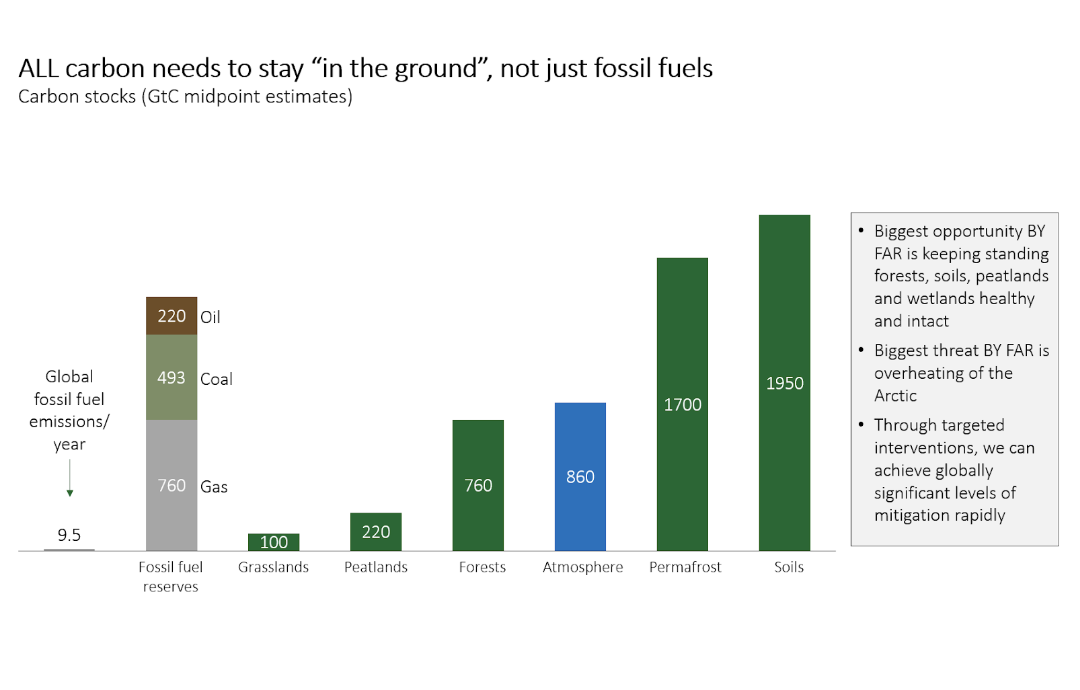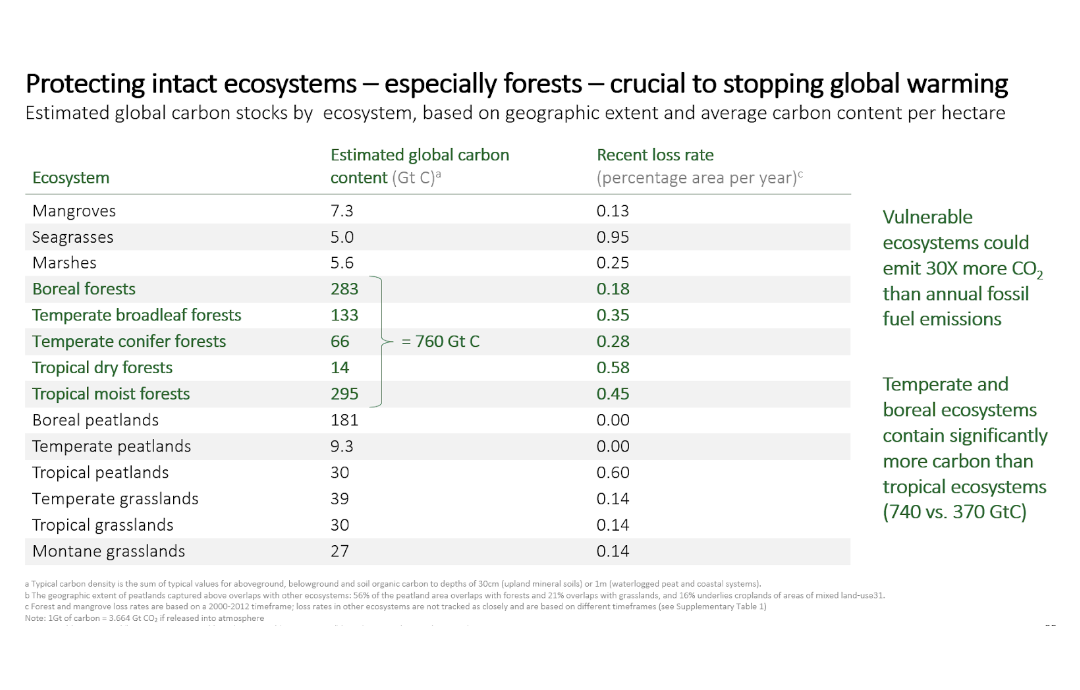The biggest opportunities – and the biggest risks – we face lie in the actions we take to protect and restore the ecosystems that sustain life on Earth.
JACK STEPHENSON
December 12, 2022
Coordinates: 45.5019° N, 73.5674° W | Montreal, Canada
Man-made emissions are the main cause of climate change, and we need to cut them as fast as possible. But most of the solutions being touted will take decades to make a real difference. Too often we ignore the fastest, cheapest, and easiest ways to fight global warming at massive scales: Protecting, restoring, and better managing the natural world.
By focusing narrowly on cutting man-made emissions – mainly from burning fossil fuels – the climate community promotes a “gloom and doom” narrative that flies in the face of science, empirical evidence, and common sense.
It goes something like this: World leaders need to sign a treaty limiting global warming to 1.5⁰C, cut their countries’ emissions in half by 2030, and get us to “net zero” by 2050, thereby stabilizing GHG concentrations in the atmosphere and cooling the planet.
No large country has ever reduced its emissions, which are up nearly 60 percent worldwide since negotiations began. Do you really believe we can predict the climate 30 years out, estimate “safe” levels of warming, then steer the economy to balance out GHG emissions and removals?
Time for a reality check.
Using advanced analytics, supercomputers, and AI we can now monitor the weather in real-time anywhere on Earth. So how is it possible to predict the climate in 2050 when we can’t accurately forecast the weather 10 days from now? If mankind is so powerful we can control the climate, then why can’t we make it rain in the desert, prevent floods, or stop the next hurricane?
The truth is that, even if we slashed all man-made emissions to zero tomorrow, it would do nothing to stop runaway global warming. Contrary to what you hear, we are out of time.
Then what’s the good news?
The biggest opportunities – and the biggest risks – we face lie in the actions we take to protect and restore the ecosystems that sustain life on Earth.
Starting now.
If we refocus our energies on improving planetary health – including phasing out toxic petrochemicals – we can make a big difference fast.
Let’s start with carbon.
Only 40 to 45% of man-made CO₂ ends up in the atmosphere. Nearly 60% get absorbed by terrestrial and marine ecosystems–mostly forests, soils, and wetlands (including peatlands, coastal wetlands, and permafrost). Keeping these ecosystems healthy and intact is by far the fastest way to combat global warming at mega-scales.
Fossil fuel emissions release 9.5 gigatons of carbon each year. Gross emissions from deforestation are roughly 5.5 gigatons, and carbon removals by terrestrial carbon sinks are 7.5. If you include agriculture, one of the most GHG-intensive industries there is, changing the ways we use and manage land is by far the fastest way to reduce emissions while counteracting some of the worst effects of climate change.
Terrestrial ecosystems store trillions of tons of carbon. Permafrost and soils contain four times more carbon than the entire atmosphere. If we don’t act urgently, these threatened ecosystems could release 20 to 30 times more CO₂ than burning fossil fuels does in a year.

Source: The Global Carbon Project 2021 (estimated midpoint ranges) Goldstein A., et al “Protecting irrecoverable carbon in Earth’s ecosystems.” (2020) Nature Climate Change Vol. 10, 287-295
Cutting down healthy forests sets off a downward spiral. Roughly 70% of the carbon dioxide released goes into the atmosphere for up to 1,000 years. At the same time, we lose the ongoing CO₂ removals those forests would have provided. More often than not, the land gets converted into high-GHG uses, e.g., human development, agriculture, logging, or fossil fuel production.
Planting trees does little to stop climate change. It’s the bigger, older trees we need to protect. One percent of trees contain 50 percent of forest carbon. If a forest is growing, no matter how old, it’s absorbing and storing CO₂, and lots of it!
Not only can healthy ecosystems halt carbon dioxide and methane emissions at large magnitudes, they also provide myriad other benefits: global cooling, clean air and water, food, jobs, and biodiversity. They protect us against floods, soil erosion, droughts, extreme weather, and zoonotic diseases like Ebola, HIV, and COVID-19.
The great news is that simultaneous breakthroughs in technology and know-how make it possible to scale up nature-based climate solutions (NCS) at rapid speeds. We can target interventions with near-surgical precision, then model, measure, and track their impacts over time. We already know what to do, where to do it, and how to do it, using a technology proven to work for hundreds of millions of years.
Even modest changes in the status quo can make an enormous difference over 30- to 50-year timeframes.
Most of the opportunity lies in 9 extractive industries – cattle, palm oil, soy, timber, and mineral extraction among them – and 10 countries. When it comes to saving forests, the Amazon, Congo Basin, and Indonesia get most of the headlines. But there is far more carbon, in total and per acre, in temperate and boreal ecosystems located in Canada, the U.S., Russia, and China. Many are under serious threat.

Source: Goldstein A., et al “Protecting irrecoverable carbon in Earth’s ecosystems.” (2020) Nature Climate Change Vol. 10, 287-295
No need to drain peatlands to grow palm oil, burn down rainforests to raise cattle, or log old-growth forests for wood. Greening supply chains and renegotiating trade agreements – as hundreds of corporations and many countries have done – can make this happen FAST.
Land-use decisions mostly get made at the local level by individuals, communities, companies, and local authorities.
Anyone can act now to keep our high-priority ecosystems vibrant and healthy.
Just remember: Before you plant a tree, save a forest!
